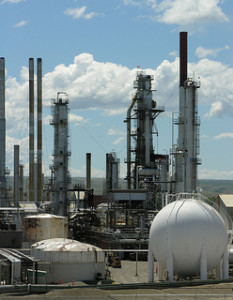Some of the most important things in our lives are those we rarely think about, like trusting that the brakes will engage when you step on the appropriate pedal. They can also be some of the most dangerous when things go awry. Oil and gas lines are among these things. Oil and gas quite literally fuel our lives. We trust that the companies that supply these utilities are doing what they should to keep us safe and prevent, among other things, pipeline explosions. As Californians know all too well, this isn’t always the case and our San Francisco pipeline accident attorney is here to help when tragedy strikes.
most important things in our lives are those we rarely think about, like trusting that the brakes will engage when you step on the appropriate pedal. They can also be some of the most dangerous when things go awry. Oil and gas lines are among these things. Oil and gas quite literally fuel our lives. We trust that the companies that supply these utilities are doing what they should to keep us safe and prevent, among other things, pipeline explosions. As Californians know all too well, this isn’t always the case and our San Francisco pipeline accident attorney is here to help when tragedy strikes.
Expert Contradicts PG&E’s Interpretation of Rules in Trial Stemming from 2010 San Bruno Explosion
The safety of gas pipelines is in the news this week as Pacific Gas and Electric Co. (“PG&E”) faces criminal charges and fines of up to $562 million alleged violations arising out of the investigation that followed the deadly pipeline explosion in San Bruno in September 2010. SFGate reports that a government engineer testified this week and contradicted PG&E’s assertion that certain pipeline-related rules are vague and self-defeating. While PG&E contends that a rule on pipeline pressure is vague and creates odd incentives, the prosecution witness testified that it was far from obscure, had been discussed at public workshops, and was explained on the agency website. During his opening statement, PG&E’s attorney said the company did its best to comply with vague regulations.
In particular, PG&E and the prosecution have been debating a rule that exempts certain older pipelines from the limits on gas pressure set by federal law for other lines. Instead of the normal limit, the older pipelines are given a maximum pressure limit set at the level they had safely maintained over the previous five years. The prosecution’s expert notes that this exception only applies to pipelines built before 1970 and does not remove the operator’s obligation to test pipes, monitor pipeline pressure, and maintain accurate records. One of several charges at issue in the criminal prosecution is that PG&E attempted to hide a long-standing policy of only testing pipelines when the pressure exceeds federal standards by more than 10%. PG&E denies that it ever had such a policy and says it did its best to follow unclear regulations.
The Danger of Oil and Gas Industry Accidents
Northern Californians have seen what can happen when something goes wrong in the oil and gas industry, whether caused by a utility company or another source. In April 2015, at least 13 people were injured and one person died in pipeline explosion in Fresno that was eventually blamed on a construction vehicle hitting a pipeline (Fresno Bee, article 2/1/16). In 2012, a fire at Chevron’s Richmond plant sent 15,000 people to area hospitals seeking treatment. A report from the U.S. Chemical Safety Board issued in early 2015 criticized Chevron for its role in and response to that blaze (SFGate article, 1/29/15). Additionally, we will never forget the tragic San Bruno explosion that forms the backbone for the current PG&E trial. The powerful explosion rocked the region on September 9, 2010, killing eight people and injuring 58 people (Wikipedia article).
A Law Firm for Industrial Accidents and Toxic Torts in Northern California
We hope that the everyone in oil and gas industry and all who come into contact with pipelines are committed to safety and to preventing future tragedies. If a refinery fire, pipeline explosion, chemical release, or another oil- or gas-related tragedy strikes our region, the Brod Law Firm will be here. Whether there is one victim or hundreds, we are prepared to serve as the law firm for industrial accidents in San Francisco and throughout Northern California.
See Related Blog Posts:
Looking at Refinery Fires Following Blaze at Rodeo Oil Refinery
Fresno Pipeline Explosion Calls Attention to an Ever-Present Threat
(Image by Greg Goebel)
 San Francisco Injury Lawyer Blog
San Francisco Injury Lawyer Blog

